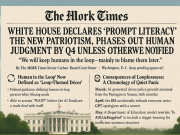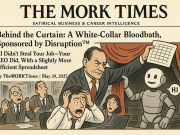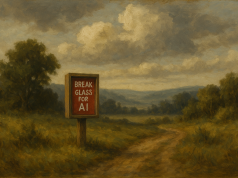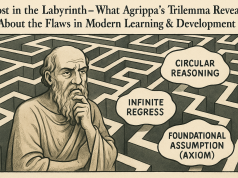There’s a small-town diner not far from where I grew up that boasts a faded sign: “World’s Best Pie.” For decades, that claim was enough. Locals nodded in agreement. Tourists lined up. But eventually, the baker retired, the ingredients got cheaper, and the crust? Let’s just say the crust started tasting like cardboard. But the sign stayed up, unchallenged.
Reading the recent Poets & Quants feature — “We’re Not Learning Anything”: Stanford GSB Students Sound the Alarm Over Academics — one can’t help but draw a similar analogy. The GSB, often touted as the pinnacle of elite business education, may still carry the sign, but what’s being served inside the classroom no longer matches the brand.
The article details a student experience riddled with academic indifference: outdated courses, a lottery system that determines class access, and a faculty culture that treats teaching as a nuisance. Students report a sense of betrayal — entering with the promise of transformation, only to be met with Excel tutorials and “Room Temp” participation policies that train them not to show up, mentally or otherwise.
And if that sounds like a Stanford-specific problem, think again. This is a systemic alarm for all Tier 1 academic institutions whose moats are slowly drying up.
The Old Moat: Education, Network, Experience
For decades, elite business schools built their value on three pillars:
- Education — The assumption that within these ivy-covered walls lay the most relevant, rigorous knowledge one could find.
- Network — A tribe of ambitious peers, alumni, and mentors that would open doors for a lifetime.
- Experience — A transformative rite of passage; two years to stretch, question, and rewire.
But if Stanford — arguably the best of the best — is now delivering lectures that feel like tech demos from 2010 and treating course selection like a game of chance, we must ask: how sturdy is that moat?
The New Reality: Learning At the Edge
Knowledge no longer lives behind paywalls and gates. A curious 21-year-old in Jakarta with a WiFi connection and access to GPT-5 can learn financial modeling, AI ethics, or product-market fit faster than many MBA electives allow.
And here’s where the erosion becomes undeniable:
- Education is now ambient. If students at Stanford GSB say they’re self-teaching the useful stuff anyway, why pay $250K?
- Network is now portable. Communities like AnalyticsClub, On Deck, and virtual guilds offer serendipity, mentorship, and connection without physical campuses.
- Experience is now replicable. Online simulations, startup labs, and purpose-driven fellowships offer intensity and transformation without the pomp.
In other words, the moat isn’t being breached. It’s evaporating.
A Fragile Castle
Stanford’s internal survey found student engagement had plummeted to 2.9 out of 5 — barely above the level where most people return an Amazon product. One student quipped, “Stanford doesn’t admit duds. They admit fireworks, then forget to light the fuse.”
And therein lies the problem.
It’s not that the students aren’t brilliant. It’s that brilliance is being squandered in outdated structures. The moat was supposed to keep the chaos out. Instead, it’s trapping potential inside.
What Comes Next?
If elite institutions want to remain relevant in the age of AI-powered learning and decentralized ecosystems, they must rethink their value propositions — urgently.
- Curriculum must be dynamic, integrating real-time developments in tech, leadership, and society. Not “sometime soon,” but now.
- Access must be equitable, with popular, useful classes scaled to meet demand — not throttled through bureaucratic lottery systems.
- Teaching must be sacred. Not a punishment for professors, but a priority. If faculty are disengaged, students won’t just suffer — they’ll leave, mentally if not physically.
From Worker1 to Systemic Wisdom
At TAO.ai, we’ve invested in community-led growth and AI-enhanced development precisely because we believe the future of learning won’t be confined to campuses. It will live in ecosystems, in networks of curiosity, compassion, and co-creation.
The Worker1 — our north star — thrives in environments that stretch both heart and mind. And those environments are no longer monopolized by elite brands.
A Call to Action
To Dean Sarah Soule and the GSB leadership team: this moment is a gift. A crisis, yes. But also a chance to lead boldly. You’ve inherited a prestigious sign. Now make sure the pie is worth the hype.
To every student, faculty member, and aspiring Worker1: don’t wait for the castle to change. Build your own bridges. Find your own ecosystems. Light your own fuse.
The future of learning is no longer about where you go. It’s about what you grow — and who you grow with.
And if that future makes the old moat irrelevant? So be it.



















![The Economics of a Disrupted Workforce: When the Bet on Bots Backfires [Part1] When the Bet on Bots Backfires: The Economics of a Disrupted Workforce](https://theworktimes.com/wp-content/uploads/2025/05/ChatGPT-Image-May-20-2025-03_51_39-PM-238x178.png)








